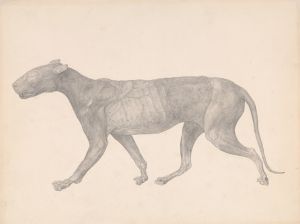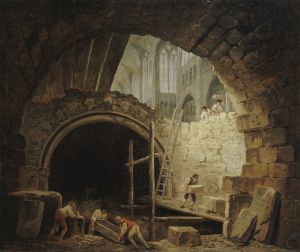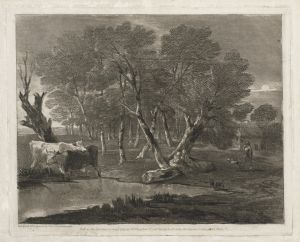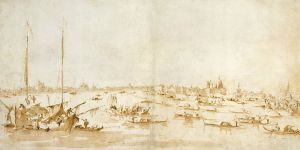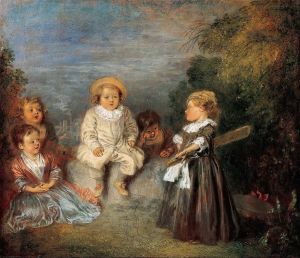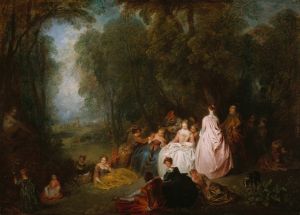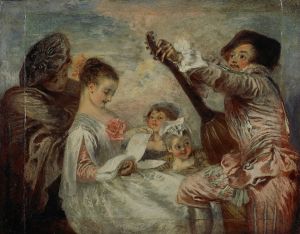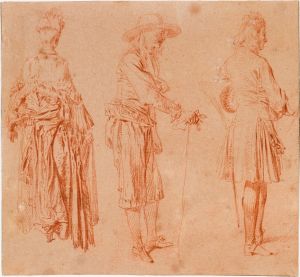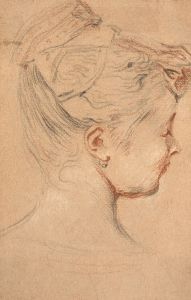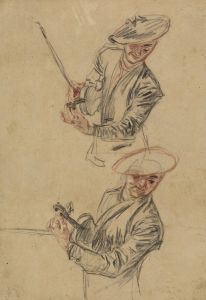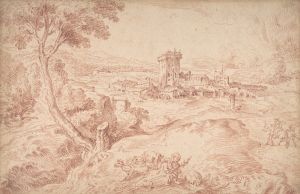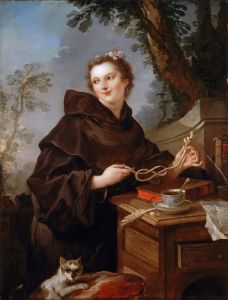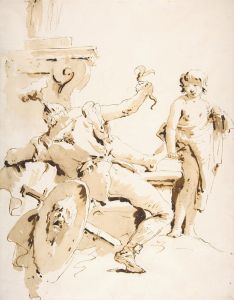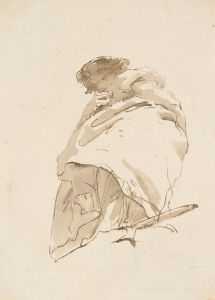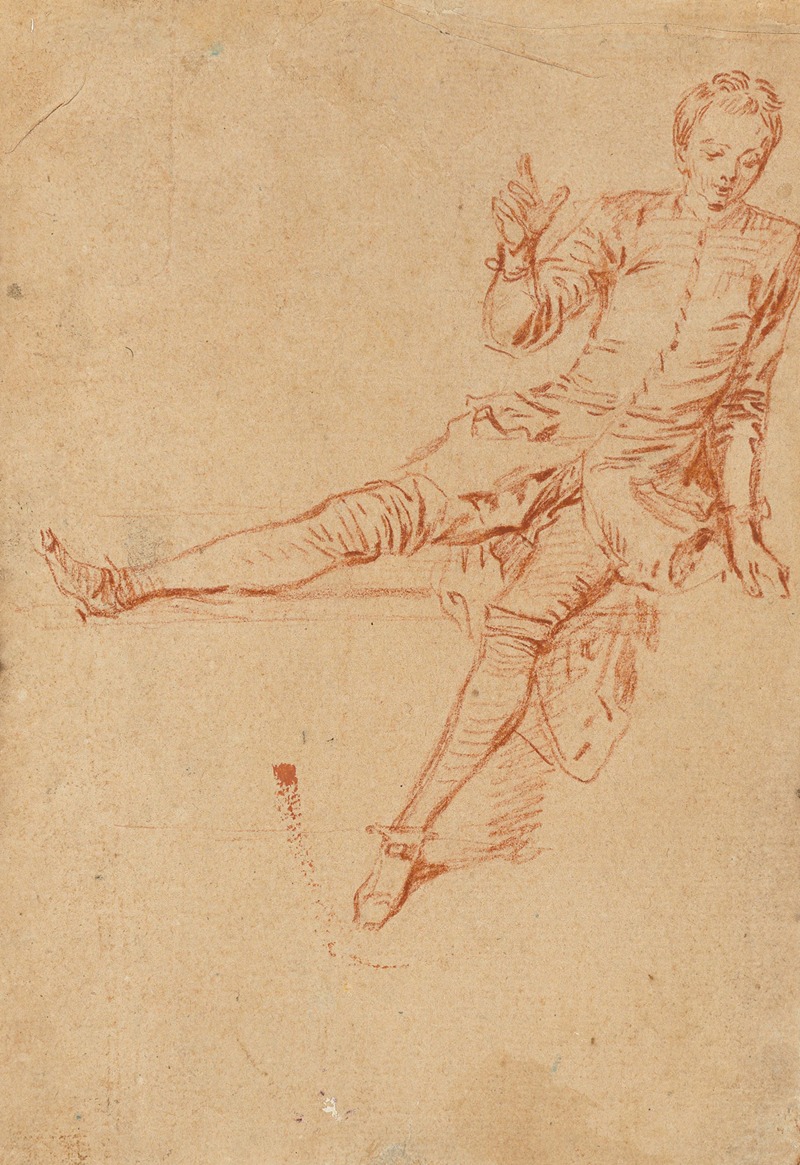
Étude de jeune homme assis, la jambe droite et la main levées
A hand-painted replica of Jean-Antoine Watteau’s masterpiece Étude de jeune homme assis, la jambe droite et la main levées, meticulously crafted by professional artists to capture the true essence of the original. Each piece is created with museum-quality canvas and rare mineral pigments, carefully painted by experienced artists with delicate brushstrokes and rich, layered colors to perfectly recreate the texture of the original artwork. Unlike machine-printed reproductions, this hand-painted version brings the painting to life, infused with the artist’s emotions and skill in every stroke. Whether for personal collection or home decoration, it instantly elevates the artistic atmosphere of any space.
Jean-Antoine Watteau's Étude de jeune homme assis, la jambe droite et la main levées (Study of a Young Man Sitting, Right Leg and Hand Raised) is a drawing attributed to the French Rococo artist Jean-Antoine Watteau (1684–1721). Watteau is renowned for his delicate and expressive studies of figures, which often served as preparatory works for his larger compositions. This particular drawing exemplifies his mastery of capturing naturalistic poses and the subtleties of human movement.
The artwork depicts a young man seated with his right leg bent and raised, while his right hand is lifted in a gesture that suggests motion or expression. The figure is rendered with a combination of fluidity and precision, showcasing Watteau's skill in observing and translating the human form onto paper. The drawing is executed in red chalk, a medium Watteau frequently employed for its ability to convey softness and tonal variation. The use of red chalk also allowed him to create a sense of depth and texture, particularly in the folds of clothing and the contours of the body.
Watteau's figure studies were often drawn from life and served as a repository of poses and gestures that he could later incorporate into his paintings. These studies were not necessarily intended as finished works but were highly valued for their spontaneity and insight into his creative process. The naturalism and informality of the pose in Étude de jeune homme assis reflect Watteau's interest in capturing fleeting moments and the individuality of his subjects.
The exact date of this drawing is not documented, but it is consistent with Watteau's style and technique during his mature period. It is believed to have been created as part of his preparation for one of his larger compositions, although no definitive connection to a specific painting has been established. Like many of Watteau's drawings, this piece demonstrates his ability to convey emotion and movement with minimal yet effective lines.
The drawing is currently housed in the collection of the Musée des Beaux-Arts in Orléans, France. It is one of many examples of Watteau's work that highlight his contribution to the development of Rococo art and his influence on subsequent generations of artists. His figure studies remain celebrated for their elegance, sensitivity, and technical brilliance.





